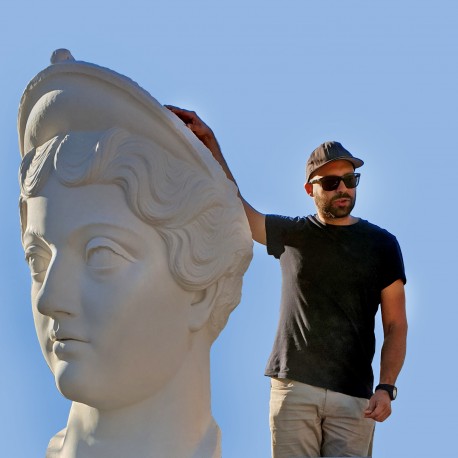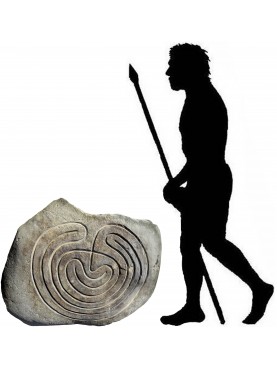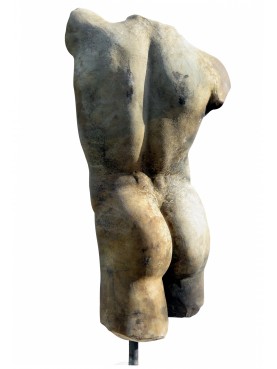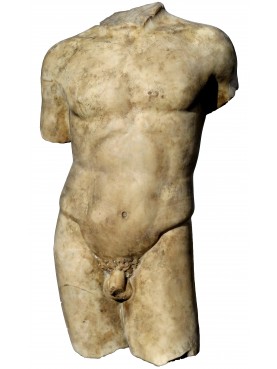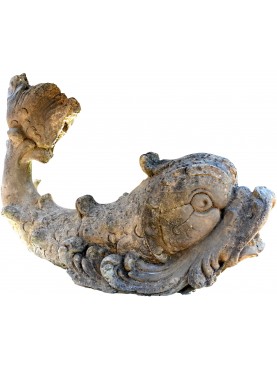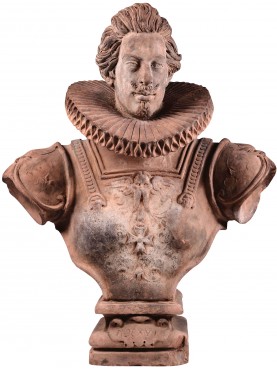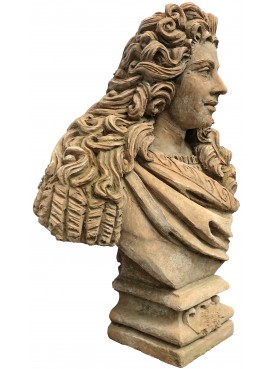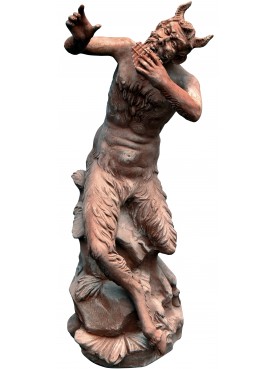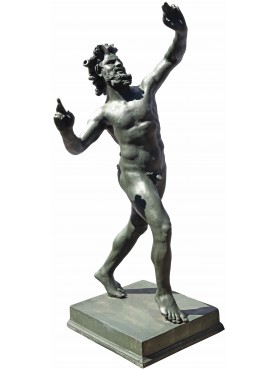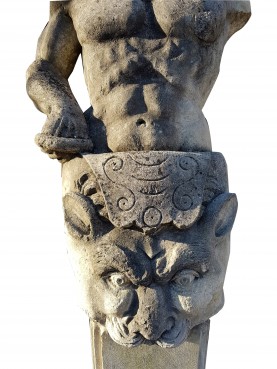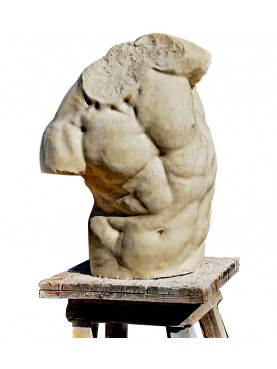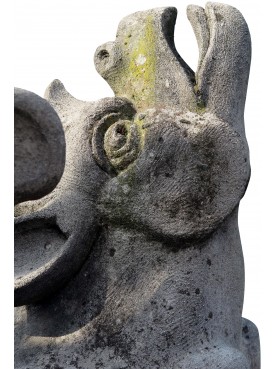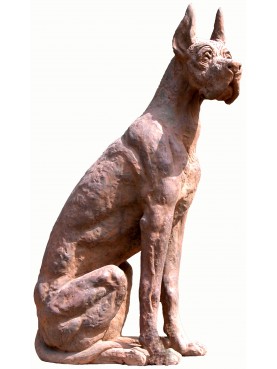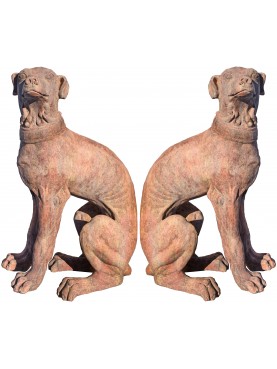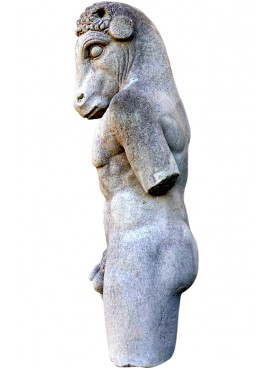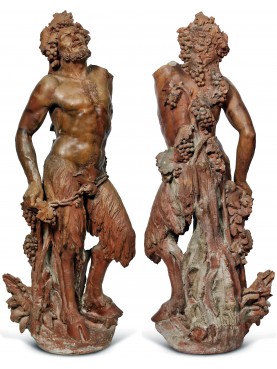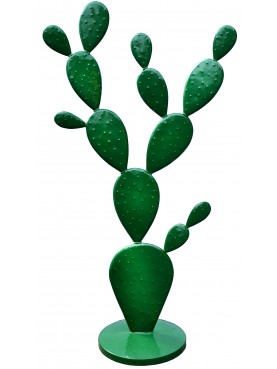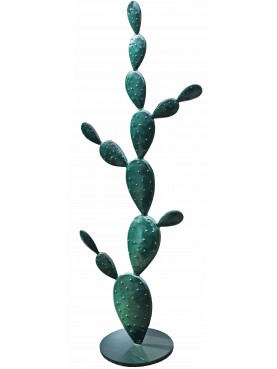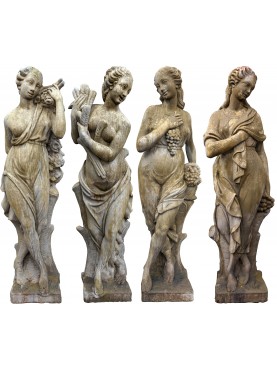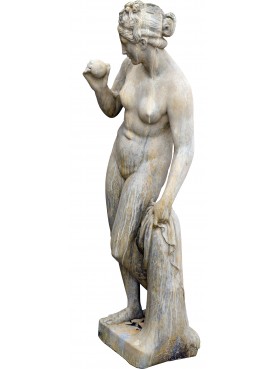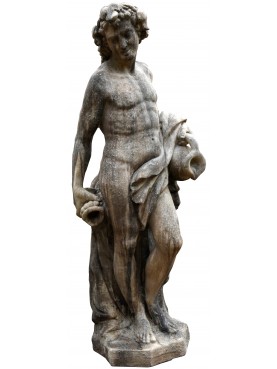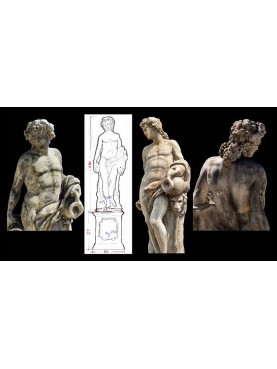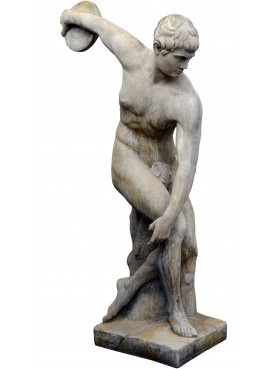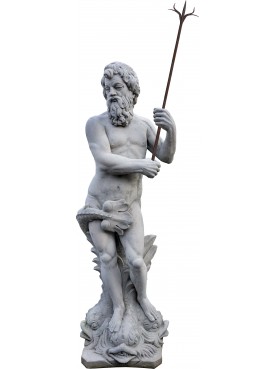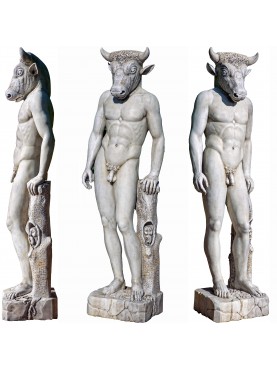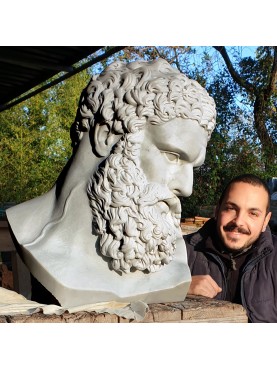Gigantesca Testa di LucillaGiant Head of Lucilla, daughter of Marcus Aurelius - from a cast of the louvre
Gigantesca Testa di LucillaGiant Head of Lucilla, daughter of Marcus Aurelius - from a cast of the louvre
New
Huge head of Lucilla (Rome, 7 March 150 - Capri, 182), Roman empress, daughter of Marcus Aurelius.
1: 1 copy of the gigantic head of the Louvre in Paris. This artifact was discovered in Carthage in Tunisia in 1847.
This reproduction is made of resin and is perfectly identical to the original. It cast comes directly from the Louvre.

1 Available
Warning: Last item in stock!
Data sheet
| Height | 78.74 in | 200 cm |
| Width | 39.37 in | 100 cm |
| Depth | 29.13 in | 74 cm |
| Weight | 132.28 lbs | 60 Kg |
| Round base diameter Ø | 19.69 in | 50 cm |
| Manufacturing | French | |
| Material | Resin | |
| Museum where the Original is exhibited | Louvre Grand Palais | |
| Museum cataloging number | MA1171 | |
| Note 01 | Provenance Carthage |
More info
Annia Aurelia Galeria Lucilla, where more simply Lucilla (Rome, 7 March 150 - Capri, 182), was an empress roma.
The head was found on 10 August 1847, the Bey of Tunis Ahmad I ibn Mustafa donated it to Monsieur De Laporte, Manager of the French Consulate General in Tunis.
M. De Laporte in turn donated it to the French state and now it is on display in the Louvre with inventory number MA1171 in the Greek, Etruscan and Roman Antiquities section.
Some argue that the head could be of Faustina minor wife of Marcus Aurelius (16 February 130 circa - Halala (Cappadocia) 176), my latest recent opinions lead to a preference for the name of Lucilla.
Let's go back to Lucilla: born on 7 March of a year that oscillates between 148 and 150, most likely date, she was the second daughter and third among the children of the Roman emperor Marcus Aurelius and his wife Faustina Minor, and one of the older sisters. of the future emperor Commodus. He was born and raised in Rome, his maternal grandparents were the emperor Antoninus Pius and his wife Faustina Maggiore, while the paternal ones were Domizia Lucilla and the praetor Marco Annio Vero; Lucilla had a twin brother who died around 150 AD.
A copy is also exhibited in Tunis as: Imperial Roman statue on display at the National Museum of Carthage (Tunisia)
Museum description plate:
Faustine La Jeune, wife of Marc Aurèle or his daughter Lucille, wife of Lucius Vérus.
Moulding. The original is in the Louvre Museum.
This marble head, built between 161 and 165 AD, emerged from the ground in 1845 during the preliminary work for the construction of the chapel of San Luigi, in the place where the judicial basilica of the Forum of Carthage was then identified. AD, it belongs to an acrolithic statue (of which only the ends, head, hands and feet were in marble).
It is one of the central pieces of Roman African sculpture.
The presence of such a work in the judicial basilica of Carthage demonstrates that it was dedicated to the contemporary imperial couple of the building's dedication and confirms that the entire monumental program of the top of Byrsa currently restorable (see model) was carried out in the third quarter of 2nd century. of our era.
Mention inscribed on the base of the statue: Found in the ruins of Carthage, August 10, 1847, and donated by His Highness the Bey of Tunis to M. de Laporte, director of the Consulate General of France

